
Fourvière: The Historic Heartbeat of Lyon
Explore the historic Fourvière in Lyon, France, where ancient Roman ruins meet breathtaking views and iconic architecture, making it a must-visit destination.
Nestled atop a hill overlooking the vibrant city of Lyon, Fourvière is a neighborhood steeped in history and charm. Its roots trace back to Roman times, and visitors can explore the ancient ruins of the Roman Theatre, a testament to the area's rich past. The hill itself offers stunning panoramic views of Lyon, making it a perfect spot for photography enthusiasts and those looking to soak in the beauty of the cityscape. A visit to Fourvière would be incomplete without stepping into the Basilica of Notre-Dame de Fourvière. This iconic church, with its intricate mosaics and stunning architecture, is not only a place of worship but also a monument of Lyon's heritage. The basilica's terrace provides one of the best vantage points in the city, where you can gaze out over the Rhône and Saône rivers and the sprawling urban landscape below. Fourvière is also home to the serene gardens of the Rosary, offering a tranquil escape from the bustling city below. Wander through the lush greenery and enjoy a peaceful moment in this beautifully landscaped haven. The neighborhood's narrow, winding streets are perfect for leisurely strolls, where you'll discover quaint cafés and local boutiques that add to its unique charm.
Local tips in Fourvière
- Wear comfortable shoes as the streets can be steep and uneven.
- Visit early in the morning or late afternoon to avoid the crowds at the Basilica.
- Take the funicular railway from Vieux Lyon to save energy for exploring the hilltop sights.
- Don't miss the Roman Theatre's summer performances during the Nuits de Fourvière festival.
- Bring a picnic to enjoy in the Rosary gardens for a relaxing break.
Fourvière: The Historic Heartbeat of Lyon
Nestled atop a hill overlooking the vibrant city of Lyon, Fourvière is a neighborhood steeped in history and charm. Its roots trace back to Roman times, and visitors can explore the ancient ruins of the Roman Theatre, a testament to the area's rich past. The hill itself offers stunning panoramic views of Lyon, making it a perfect spot for photography enthusiasts and those looking to soak in the beauty of the cityscape. A visit to Fourvière would be incomplete without stepping into the Basilica of Notre-Dame de Fourvière. This iconic church, with its intricate mosaics and stunning architecture, is not only a place of worship but also a monument of Lyon's heritage. The basilica's terrace provides one of the best vantage points in the city, where you can gaze out over the Rhône and Saône rivers and the sprawling urban landscape below. Fourvière is also home to the serene gardens of the Rosary, offering a tranquil escape from the bustling city below. Wander through the lush greenery and enjoy a peaceful moment in this beautifully landscaped haven. The neighborhood's narrow, winding streets are perfect for leisurely strolls, where you'll discover quaint cafés and local boutiques that add to its unique charm.
Iconic landmarks you can’t miss
Basilica of Notre Dame of Fourvière
Discover the enchanting Basilica of Notre Dame of Fourvière, a stunning architectural marvel with breathtaking views and rich cultural heritage in Lyon.

Gallo-Roman Museum of Lyon-Fourvière
Discover the rich history of ancient civilizations at the Gallo-Roman Museum of Lyon-Fourvière, a treasure trove of artifacts and stunning views.

Jardin des Curiosités
Explore the serene beauty of Jardin des Curiosités in Lyon, a garden offering stunning views and vibrant flora for a perfect nature escape.

Parc des Hauteurs
Experience the breathtaking views and peaceful ambiance of Parc des Hauteurs in Lyon, a perfect blend of nature and history.

Metallic tower of Fourvière
Discover the stunning views and rich history at the Metallic Tower of Fourvière, an iconic Lyonese monument resembling the Eiffel Tower.

Passerelle des Quatre Vents
Experience the picturesque Passerelle des Quatre Vents in Lyon, a stunning historical bridge offering breathtaking views and rich cultural significance.

Esplanade du Site Notre-Dame de Fourvière
Experience the breathtaking views of Lyon from the Esplanade du Site Notre-Dame de Fourvière, a must-visit observation deck rich in history and beauty.

Religious Art Museum of Fourvière
Explore the Religious Art Museum of Fourvière in Lyon for a captivating journey through history, spirituality, and artistic expression.

Site Notre-Dame de Fourvière- Fondation Fourvière
Discover the breathtaking Notre-Dame de Fourvière in Lyon, a stunning basilica with rich history, stunning architecture, and panoramic views of the city.

Escalier Basilique de Fourvière
Explore the Escalier Basilique de Fourvière for breathtaking views and rich history in the heart of Lyon, a must-visit tourist attraction.

Insula basilicale
Experience the architectural beauty and rich history of Insula Basilicale, a must-visit historical landmark in Lyon, France.
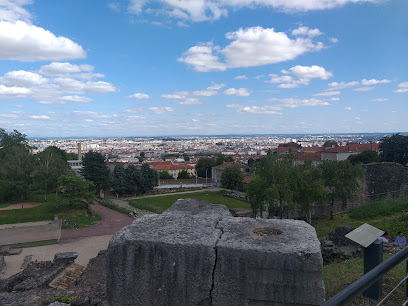
FOURVIÈRE
Explore the breathtaking Basilica of Fourvière in Lyon, a stunning blend of spirituality, history, and panoramic city views that captivate every traveler.

Unmissable attractions to see
Cathédrale Saint-Jean-Baptiste
Discover the breathtaking beauty and spiritual significance of Cathédrale Saint-Jean-Baptiste in Lyon, a must-see for every traveler.

Gallo-Roman Museum of Lyon-Fourvière
Explore the rich heritage of Roman Gaul at the Gallo-Roman Museum of Lyon-Fourvière, featuring extensive exhibits and stunning views.

Esplanade du Site Notre-Dame de Fourvière
Experience the stunning panoramic views of Lyon from the Esplanade du Site Notre-Dame de Fourvière, a perfect blend of history and breathtaking scenery.

Jardin du Rosaire
Discover the serene beauty of Jardin du Rosaire, a tranquil garden in Lyon, perfect for relaxation and enjoying stunning views.

Religious Art Museum of Fourvière
Discover the Spiritual Heritage of Lyon at the Religious Art Museum of Fourvière - A Treasure Trove of Art and History.

Site Notre-Dame de Fourvière- Fondation Fourvière
Discover the stunning Site Notre-Dame de Fourvière in Lyon, a breathtaking basilica with panoramic views and rich cultural history.

Escalier Basilique de Fourvière
Discover the breathtaking beauty and rich history of the Escalier Basilique de Fourvière, a must-visit attraction in Lyon, France.

Fresque d'Église Saint Just
Discover the breathtaking Fresque d'Église Saint Just in Lyon, an artistic marvel that narrates the city's rich history and culture through vibrant murals.

Notre dame de Fourvière
Explore the breathtaking Notre Dame de Fourvière in Lyon, a stunning basilica offering panoramic city views and rich historical significance.

Essential places to dine
Restaurant Gastronomique Christian Tetedoie
Experience exquisite French cuisine with breathtaking views at Restaurant Gastronomique Christian Tetedoie in Lyon.

Bulle - Restaurant de Fourvière - Guy Lassausaie
Experience exquisite French cuisine at Bulle - Restaurant de Fourvière with stunning views over Lyon's skyline.

Le Bœuf d'Argent
Experience authentic French cuisine at Le Bœuf d'Argent in Lyon—where tradition meets culinary artistry in every dish.

Restaurant La Chimère
Experience authentic French cuisine at Restaurant La Chimère in Lyon—where culinary artistry meets warm hospitality.

Au 14 Février
Discover exquisite modern French cuisine at Au 14 Février in Lyon, where every dish is crafted with passion and seasonal ingredients.

Les Téléphones Restaurant
Experience the epitome of haute French cuisine at Les Téléphones Restaurant in Lyon - where tradition meets innovation in every dish.
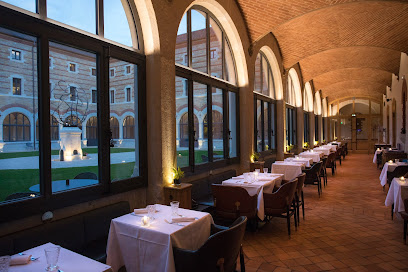
LE ROOFTOP TETEDOIE
Experience gourmet dining at Le Rooftop Tête d'Oie while enjoying stunning views over Lyon's enchanting skyline.

La Petite Table des Nuits
Experience authentic French cuisine at La Petite Table des Nuits in Lyon, where delightful flavors and warm hospitality await every visitor.

Le Coquemar
Discover authentic French cuisine at Le Coquemar in Lyon - where every dish tells a story of culinary tradition.

La Salle à Manger Restaurant-Ecole Apprentis d'Auteuil
Experience exquisite French cuisine at La Salle à Manger Restaurant-Ecole in Lyon - where future chefs create culinary masterpieces.

Markets, malls and hidden boutiques
Workshops Marinette
Explore vintage treasures and artisanal crafts at Workshops Marinette, a charming store in the heart of Lyon offering unique local finds.

Silk Saint Georges
Explore the fascinating world of silk at Silk Saint Georges, where fashion meets history in the heart of Lyon's vibrant silk district.

Mandragore
Explore the enchanting Mandragore gift shop in Lyon, where rare books, magical items, and unique decor await every traveler.
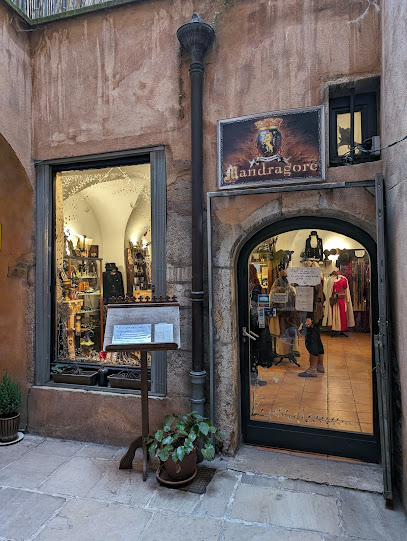
CathAm Soie
Explore unique silk and tweed accessories at CathAm Soie, a charming family-owned boutique in the heart of Lyon, perfect for discerning fashion lovers.

Pylones
Explore the whimsical world of Pylones in Lyon, where unique gifts and vibrant designs come together in a delightful shopping experience.

BROCHIER SOIERIES Vieux Lyon
Explore Brochier Soieries, a gem in Vieux Lyon, offering exquisite silk products that celebrate the city's rich textile heritage.

Souvenirs de Lyon. Com
Explore the best of Lyon’s local flavors and crafts at Souvenirs de Lyon – the perfect destination for unique gifts and souvenirs.
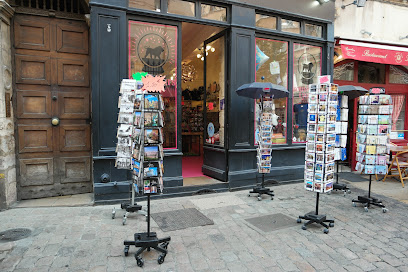
L'univers de Guignol et du Petit Prince - Boutique de souvenirs du Vieux Lyon - Musée
Explore the whimsical world of Guignol and Le Petit Prince at this charming gift shop in the heart of Vieux Lyon.

Boutiques De Fourvière
Explore spiritual treasures at Boutiques De Fourvière in Lyon, a unique religious goods store offering Christian literature and thoughtful gifts.

Boutique Folies Douces
Explore Boutique Folies Douces in Lyon for unique gifts and exquisite handicrafts that celebrate local artistry and culture.

Seek & Find(e)
Discover unique handcrafted gifts and local treasures at Seek & Find(e) in the heart of Lyon, where each item is a piece of art.

l'ensemblier - boutique de mobilier contemporain extérieur et intérieur à Lyon- sur rendez-vous
Explore L'Ensemblier in Lyon for exquisite contemporary furniture and decor that transforms your living spaces into stylish retreats.

Concept Store du Vieux-Lyon
Explore the Concept Store du Vieux-Lyon – where art meets tradition in the heart of Lyon, offering unique gifts and local delights.

Essential bars & hidden hideouts
The Elephant & Castle English Pub Lyon
Discover The Elephant & Castle English Pub in Lyon – where British pub culture meets fine dining in a cozy atmosphere.

Bulle - Restaurant de Fourvière - Guy Lassausaie
Discover the flavors of haute French cuisine at Bulle - Restaurant de Fourvière, where exquisite dishes meet breathtaking views.

Le Pub Danois
Discover the vibrant nightlife of Lyon at Le Pub Danois, where great drinks, delicious food, and a welcoming atmosphere await.

Bar Le Florian, Cocktails & Spirits
Discover the vibrant nightlife of Lyon at Bar Le Florian, where innovative cocktails meet a lively atmosphere for an unforgettable experience.

La Fonderie
Experience the vibrant nightlife of Lyon at La Fonderie, a cocktail bar renowned for its creative drinks and lively atmosphere along the Rhône River.

La Mi Graine
Discover La Mi Graine, a lively bar in Lyon offering local wines and craft beers in a cozy atmosphere, perfect for socializing and unwinding.
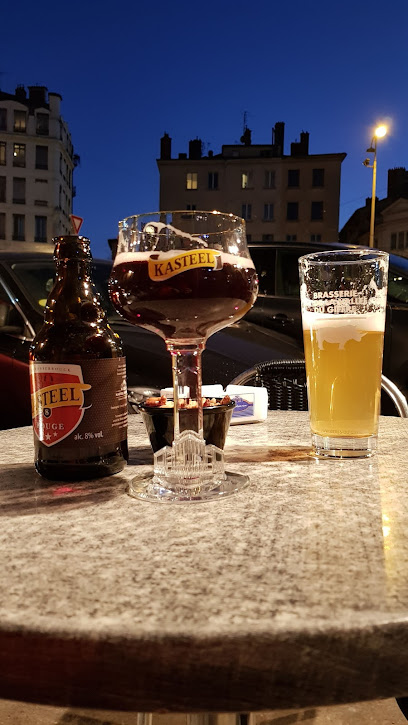
Cigale
Experience the vibrant nightlife of Lyon at Cigale, a premier cocktail bar known for its creative drinks and lively atmosphere.

Antidote
Experience the vibrant nightlife at Antidote, a lively bar in Lyon offering live music, sports, and a fantastic selection of beers.

Black Hole
Discover Black Hole, Lyon's vibrant bar blending craft beers, exotic cocktails, and delicious tapas for an unforgettable nightlife experience.
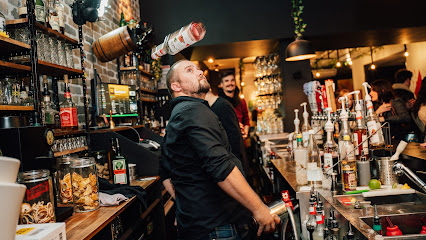
La Cave Des Voyageurs
Discover La Cave Des Voyageurs, Lyon's charming wine bar offering exquisite local wines and delectable cuisine in a cozy atmosphere.
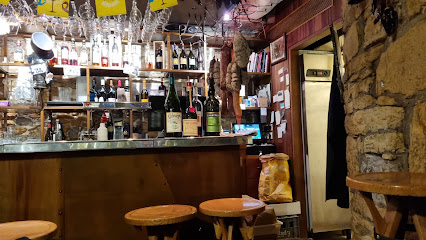
St Andrew's
Discover St Andrew's in Lyon: A lively bar offering cocktails, tapas, and live music for an unforgettable night out.

BAR DE BON-SECOURS
Immerse yourself in Lyon's nightlife at Bar de Bon-Secours, where expert mixology meets a cozy atmosphere for an unforgettable experience.

Bar De La Colline
Experience the charm of Lyon at Bar De La Colline, where delightful drinks and a cozy atmosphere create the perfect retreat.

LOUNGE & LOGE
Discover the charm of Lyon at Lounge & Loge, a cozy café and lounge perfect for relaxation and local cuisine.

Local Phrases
-
- HelloBonjour
[bon-zhoor] - GoodbyeAu revoir
[oh ruh-vwahr] - YesOui
[wee] - NoNon
[nohn] - Please/You're welcomeS'il vous plaît/De rien
[seel voo pleh/duh ryen] - Thank youMerci
[mehr-see] - Excuse me/SorryExcusez-moi/Désolé
[ehk-skew-zay mwah/dey-zoh-lay] - How are you?Comment ça va?
[koh-mohn sah vah] - Fine. And you?Bien. Et vous?
[byen. ay voo] - Do you speak English?Parlez-vous anglais?
[par-lay voo ahn-glay] - I don't understandJe ne comprends pas
[zhuh nuh kohm-prahnd pah]
- HelloBonjour
-
- I'd like to see the menu, pleaseJe voudrais voir le menu, s'il vous plaît
[zhuh voo-dray vwahr luh meh-noo, seel voo pleh] - I don't eat meatJe ne mange pas de viande
[zhuh nuh mahnj pah duh vyand] - Cheers!Santé!
[sahn-tay] - I would like to pay, pleaseJe voudrais payer, s'il vous plaît
[zhuh voo-dray pay-ay, seel voo pleh]
- I'd like to see the menu, pleaseJe voudrais voir le menu, s'il vous plaît
-
- Help!Au secours!
[oh suh-coor] - Go away!Allez-vous en!
[ah-lay voo-zahn] - Call the Police!Appelez la police!
[ah-peh-lay lah poh-lees] - Call a doctor!Appelez un médecin!
[ah-peh-lay uh may-deh-sahn] - I'm lostJe suis perdu
[zhuh swee pehr-doo] - I'm illJe suis malade
[zhuh swee mah-lahd]
- Help!Au secours!
-
- I'd like to buy...Je voudrais acheter...
[zhuh voo-dray zah-shtay...] - I'm just lookingJe regarde juste
[zhuh ruh-gard zhust] - How much is it?Combien ça coûte?
[kohm-byen sah koot] - That's too expensiveC'est trop cher
[say troh shair] - Can you lower the price?Pouvez-vous baisser le prix?
[poo-vez voo bay-say luh pree]
- I'd like to buy...Je voudrais acheter...
-
- What time is it?Quelle heure est-il?
[kell uhr ay-tee-l] - It's one o'clockIl est une heure
[eel ay oon uhr] - Half past (10)Dix heures et demie
[dees uhr ay duh-mee] - MorningMatin
[mah-tahn] - AfternoonAprès-midi
[ah-pray mee-dee] - EveningSoir
[swahr] - YesterdayHier
[yehr] - TodayAujourd'hui
[oh-zhoor-dwee] - TomorrowDemain
[duh-mahn] - 1Un
[uhn] - 2Deux
[duh] - 3Trois
[twah] - 4Quatre
[kah-truh] - 5Cinq
[sank] - 6Six
[sees] - 7Sept
[set] - 8Huit
[wheat] - 9Neuf
[nuhf] - 10Dix
[dees]
- What time is it?Quelle heure est-il?
-
- Where's a/the...?Où est un/le...?
[oo eh uh/luh] - What's the address?Quelle est l'adresse?
[kell ay la-dress] - Can you show me (on the map)?Pouvez-vous me montrer (sur la carte)?
[poo-vez voo muh mohn-tray (soor lah kart)] - When's the next (bus)?Quand est le prochain (bus)?
[kahnd ay luh proh-shahn (boos)] - A ticket (to ....)Un billet (pour ....)
[uhn bee-yay (poor)]
- Where's a/the...?Où est un/le...?
History of Fourvière
-
Fourvière, originally known as the Roman district of Lugdunum, was founded in 43 BC by Lucius Munatius Plancus. This neighborhood became the heart of Roman Gaul, marked by the construction of a large amphitheater and temples. The remains of the ancient theatre, still visible today, testify to the area's significance as a center of culture and governance in the Roman Empire.
-
During the 4th century, Fourvière became a crucial site for early Christianity in the region. It is believed that Saint Irenaeus, the bishop of Lyon, preached in the area. The construction of the Basilica of Notre-Dame de Fourvière in the late 19th century was a tribute to this religious heritage, symbolizing the spiritual revival and the importance of the Virgin Mary in Lyon.
-
Built between 1872 and 1884, the Basilica of Notre-Dame de Fourvière is a stunning example of 19th-century architecture, blending Byzantine and Gothic styles. The basilica is not only a prominent religious site but also a cultural landmark, offering panoramic views of Lyon. It was constructed to honor the Virgin Mary, who is credited by the locals for protecting the city from the Prussian threat during the Franco-Prussian War.
-
During World War II, Fourvière played a strategic role in the French Resistance. The hills provided a vantage point for resistance fighters, and several clandestine operations were planned from this area. The site remains emblematic of the courage and resilience of Lyon's citizens during this tumultuous period.
-
Today, Fourvière is recognized not only for its historical landmarks but also for its vibrant cultural scene. The area hosts the annual Nuits de Fourvière festival, showcasing a variety of performances, including theater, music, and dance, in the ancient Roman amphitheater. This fusion of history and contemporary culture continues to attract visitors from around the world.
Fourvière Essentials
-
Fourvière is easily accessible from other neighborhoods in Lyon. The most convenient way is to take the funicular from Vieux Lyon (the old town) to the top of Fourvière Hill. The funicular station is located near the Vieux Lyon metro station (Line D). Alternatively, you can take a bus (lines 12 and 19) that connects to the area. If you're coming from the Part-Dieu train station, you can take the metro Line B to Saxe-Gambetta and then transfer to Line D.
-
Fourvière is a relatively small area, and many attractions can be explored on foot. The funicular system is a unique and efficient way to travel between the hill and the city center. Bicycles are available for rent through local bike-sharing programs, and there are some designated bike lanes. Public transport options like buses and trams are also available, with stops at key locations. Taxis and rideshare services are also an option for those who prefer direct transport.
-
Fourvière is generally safe for tourists, but standard precautions are advisable. While the area is well patrolled, avoid poorly lit streets at night and be cautious of pickpockets in crowded places. It's wise to stay informed about your surroundings, especially in tourist-heavy areas. Specific areas known for higher crime rates in Lyon include parts of the La Croix-Rousse neighborhood, so exercise caution if venturing beyond Fourvière.
-
In case of an emergency, dial 112 for immediate assistance. For medical emergencies, the nearest hospital is Hôpital Édouard Herriot, which is accessible via public transport. Local pharmacies are also available for minor health issues. It's advisable to have travel insurance that covers medical emergencies and to keep a list of emergency contacts handy.
-
Fashion: Do dress modestly when visiting religious sites, such as the Basilique Notre-Dame de Fourvière. Don’t wear overly casual or revealing clothing. Religion: Do respect local customs and traditions; cover your shoulders and knees in churches. Public Transport: Do be courteous; offer your seat to the elderly. Don’t eat or drink on public transport. Greetings: Do greet locals with a polite 'Bonjour' (hello). Eating & Drinking: Do try local specialties like quenelles and Lyonnais wines. Don’t refuse an invitation to share a meal, as it can be considered impolite.
-
To experience Fourvière like a local, visit the open-air markets for fresh produce and regional specialties. Explore the hidden pathways and gardens on Fourvière Hill for stunning views and fewer tourists. Join a guided tour of the Basilica to learn about its history and architecture. Don’t miss the evening light show on the Basilica, which illuminates the structure beautifully. Engage with local artisans in the area for unique souvenirs and experiences.
Trending Landmarks in Fourvière
-
Basilica of Notre Dame of Fourvière
-
Gallo-Roman Museum of Lyon-Fourvière
-
Jardin des Curiosités
-
Parc des Hauteurs
-
Metallic tower of Fourvière
-
Passerelle des Quatre Vents
-
Esplanade du Site Notre-Dame de Fourvière
-
Religious Art Museum of Fourvière
-
Site Notre-Dame de Fourvière- Fondation Fourvière
-
Escalier Basilique de Fourvière
-
Insula basilicale
-
FOURVIÈRE
Nearby Cities to Fourvière
-
Things To Do in Grenoble
-
Things To Do in Annecy
-
Things To Do in Geneva
-
Things To Do in Lausanne
-
Things To Do in Vevey
-
Things To Do in Dijon
-
Things To Do in Montreux
-
Things To Do in Avignon
-
Things To Do in Nîmes
-
Things To Do in Zermatt
-
Things To Do in Turin
-
Things To Do in Bern
-
Things To Do in Thun
-
Things To Do in Montpellier
-
Things To Do in Murren











